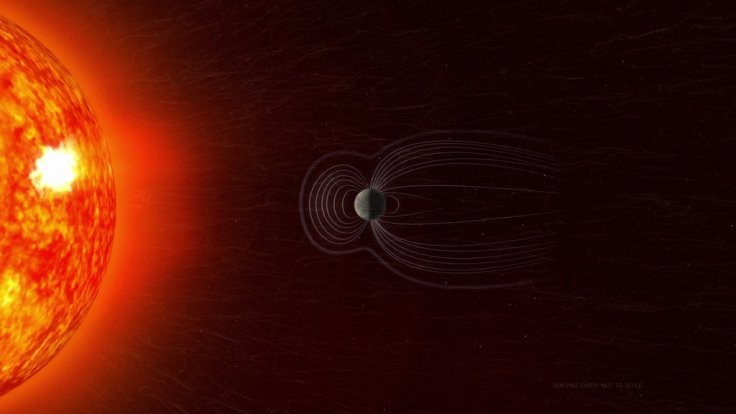The National Aeronautics and Space Administration (NASA) has a new headache. Earth's magnetic field isn't just getting weaker but also splitting into two halves in a particular region. Termed as the South Atlantic Anomaly (SAA), a region over South America and the southern Atlantic Ocean, Earth's magnetic field is getting weaker. Over the last 200 years, the magnetic force has weakened by close to nine percent.
The magnetic field is important for Earth's survival. It works as a deflective shield that protects Earth from charged particles, solar flare and space rocks. The split, when complete, can cause two different but a larger anomaly. The existing SAA is already allowing particles to come closer to Earth's surface that can knock out compasses, computers and cause problems in satellites' data collection.

What Causes the Anomaly?
Earth's magnetic field is generated by Earth's outer core with molten iron-rich rocks inside. It acts like a huge generator, called the geodynamo, that creates electric currents to produce the magnetic field. While Earth is like a giant magnet with north and south poles representing its magnetic polarities, its core magnetic field isn't that simple. It fluctuates because of the molten metals.
The anomaly occurs because of the Earth's core — the tilt of the magnetic axis and flow of the molten metals 1800 miles or 2,900 kilometers below the surface. The massive reservoir of molten rocks called the African Large Low Shear Velocity Province interrupts the magnetic field's generation.
"The observed SAA can be also interpreted as a consequence of weakening the dominance of the dipole field in the region," said Weijia Kuang, a geophysicist in Goddard's Geodesy and Geophysics Laboratory.
He added, "More specifically, a localized field with reversed polarity grows strongly in the SAA region, thus making the field intensity very weak, weaker than that of the surrounding regions."
Effects of SAA anomaly
While it doesn't directly affect life on Earth apart from confusing birds' navigation system that relies on the magnetic field, it can cause havoc on satellite and the International Space Station (ISS), which crosses through the anomaly.
The higher levels of radiation, caused by the anomaly, affect the Global Ecosystem Dynamics Investigation (GEDI) instruments onboard the ISS. The GEDI collects important data and the SAA causes "blips" that reset the power of instruments. Thus, it loses two hours of data every month. That's the main reason why NASA is studying the strange phenomenon.

Although the extent of the effects remains unknown to scientists, understanding how SAA is changing will be important in preparing future satellites. By studying the changes in the SAA, researchers can also understand Earth's core and "how its dynamics influence other aspects of the Earth system," said Kuang.
Terry Sabaka, a geophysicist at NASA's Goddard Space Flight Center, is one of the scientists studying the anomaly using data from the European Space Agency's Swarm satellite constellation and previous data from other space agencies. The team seeks to create a global model to predict the anomaly.
"Even though the SAA is slow-moving, it is going through some change in morphology, so it's also important that we keep observing it by having continued missions. Because that's what helps us make models and predictions," Sabaka said.









